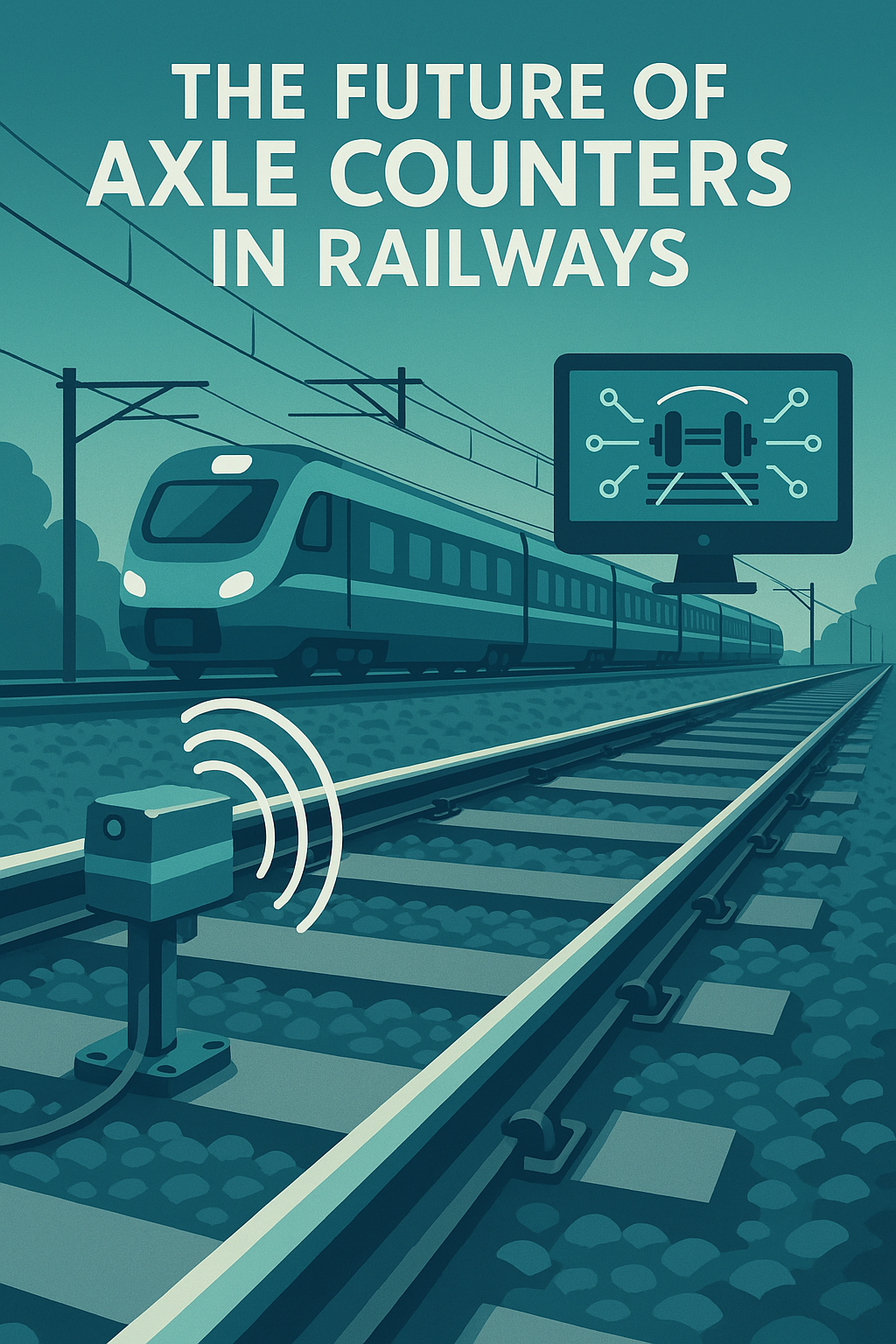Train travel has always been about more than just locomotion — it’s about safety, coordination, and keeping everything running like clockwork. Behind the scenes, axle counters play a quiet but crucial role. They detect trains by counting the number of axles entering and exiting a track section, helping railway systems monitor occupancy and prevent collisions.
Compared to old-school track circuits, axle counters are more dependable, especially in tough environments. And as railways push toward safer, smarter, and more sustainable infrastructure, these little devices are gearing up for a big leap forward.
Let’s take a look at where axle counters stand today — and where they’re headed.
Where We Are: Reliable, but Not Perfect
Axle counters help trains stay in their lane — literally. They’re rock-solid in high-speed networks, metro systems, and regions with tough weather, where track circuits can falter.
But they aren’t flawless. Some current issues include:
- Electromagnetic interference, which can mess with readings
- Wear and tear in harsh conditions
- Maintenance demands to prevent false positives or undetected trains
With autonomous trains gaining ground and railways crossing national borders, axle counters must also be able to talk to different types of signaling systems. Interoperability is no longer a luxury — it’s a necessity.
What’s Next: Tech That Could Transform the Game
1. IoT & Wireless Upgrades
Imagine axle counters that send real-time updates wirelessly, skipping bulky cables altogether. With Internet of Things (IoT) tech onboard, they could stream data directly to control centers and detect anomalies (like missing wheels!) before they cause disruptions.
2. AI & Machine Learning
Artificial intelligence could take axle counters to another level. By recognizing normal patterns and spotting strange ones — like debris on the track or minor axle slips — AI can help prevent accidents and enable smarter maintenance planning.
3. Green Power with Energy Harvesting
Next-gen counters might power themselves using train vibrations, thanks to piezoelectric sensors. That means no external power and less environmental impact — perfect for remote or energy-conscious locations.
4. Ready for Autonomy
As railways shift toward automated systems, axle counters will need to deliver real-time data to systems like ETCS Level 3. That kind of seamless integration could unlock moving-block operations and dramatically boost track capacity.
5. Cybersecurity Shields
With greater connectivity comes greater risk. Future axle counters will need robust encryption and maybe even blockchain authentication to keep data safe from tampering or attacks.
A Global Railway Renaissance
Rail networks across the world — from Europe’s ERTMS to India’s Dedicated Freight Corridors — are racing toward high-speed, interconnected, modern infrastructure. Flexible, adaptable axle counters will be vital to making that happen.
In low-budget regions, affordable modular versions could bring advanced signaling to underserved lines. Meanwhile, in dense, high-speed corridors, ultra-precise axle counters could enable tighter train scheduling and faster journeys.
The Roadblocks Ahead
Of course, innovation doesn’t come easy. Some of the challenges include:
- Standardizing equipment across international systems
- Upgrading legacy tracks without breaking budgets
- Maintaining reliability in extreme environments, from blizzards to desert heat
Solving these will take creativity, collaboration, and courage — but the payoff is immense.
Looking Down the Track
Axle counters may not be flashy, but their evolution is vital to the future of rail. As they grow smarter, greener, and better connected, they’ll become an indispensable part of automated and interoperable rail networks worldwide.
Railways are on the move — and axle counters are riding shotgun.

Leave a Reply